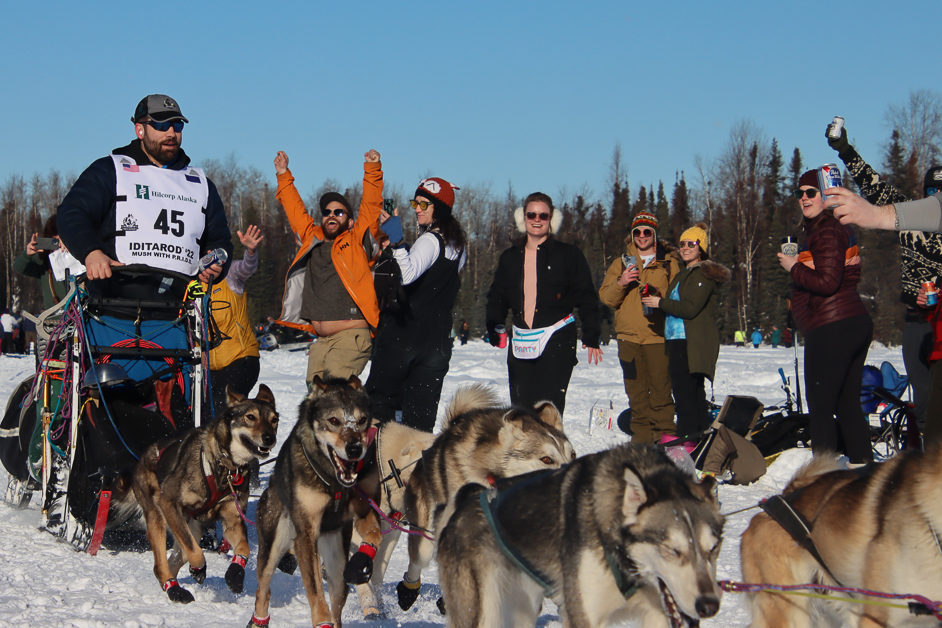Under clear and sunny skies in Willow Sunday afternoon, 49 teams started their 1,000-mile sprint to Nome, kicking off the 50th running of the Iditarod Trail Sled Dog Race.
Alaska Public Media’ Lex Treinen reports:
The official race start followed a snowy ceremonial start in Anchorage on Saturday.
Trail conditions appeared excellent, though slightly soft from recent snowfall.
At the top of mushers’ minds was the temperature, which hovered in the mid-30s — comfortable for humans, but warm for sled dogs.
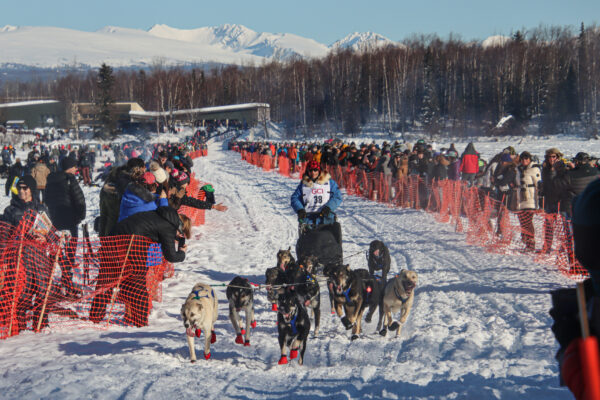
Four-time Iditarod champion Martin Buser said mushers often take more breaks in higher temperatures, letting their dogs cool and hydrate during the warmest parts of the day.
“We don’t tend to rely on snow as a source of hydration. But on a warm day like today with fresh snow all over the place, it’s a good cooling aid,” he said.
Buser said the warm conditions would favor dogs from more coastal areas like Southcentral, while dogs that live in Interior Alaska may struggle because they grow thicker undercoats.

While Buser sat casually in his sled, other mushers like rookie Julie Ahnen, paced around their trucks nervously.
She tried to reassure herself.
“There’s nothing to be nervous about. I’m here. I’m prepared. I’m ready to go. I don’t have any problems. Just talking this through as I go,” she said with a nervous chuckle.
Out on the trail, fans were enjoying the warm weather. Hundreds of people gathered around the start area. Some brought portable grills, foldout tables and speakers to blast music.
After leaving Willow, teams have 42 miles to the first checkpoint at Yentna Station.



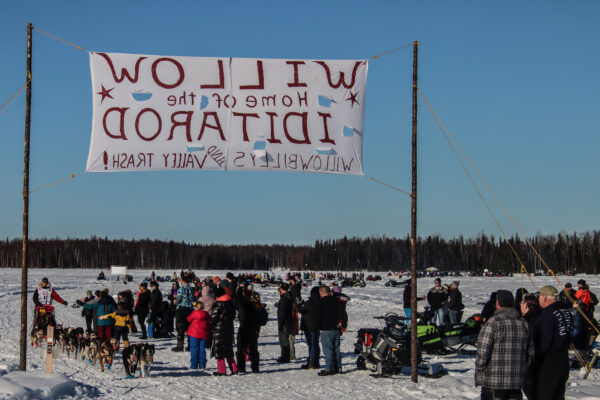
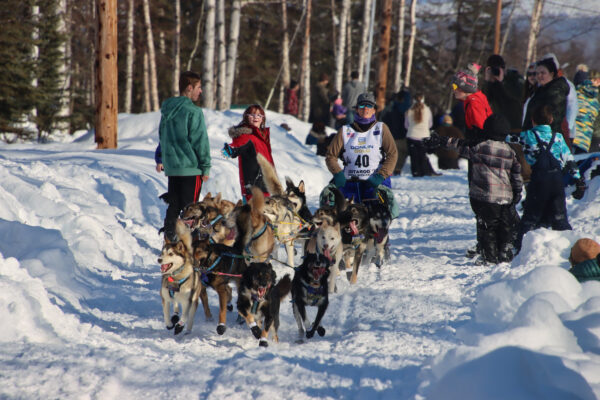

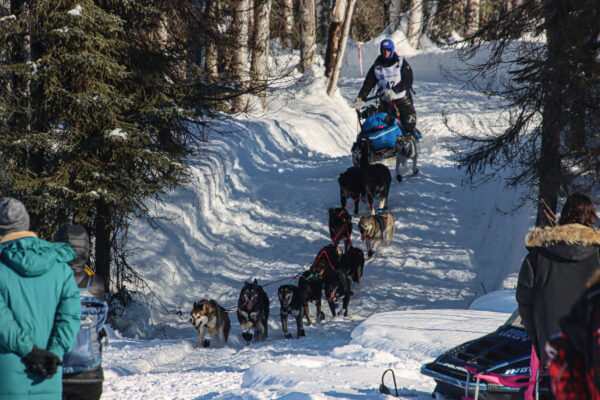
Image a top: Musher Joshua McNeal takes a refreshment from a fan near the official start of the Iditarod in Willow on Sunday. (Lex Treinen/Alaska Public Media)

